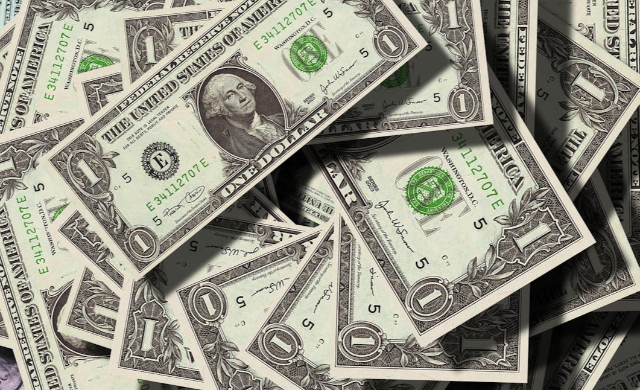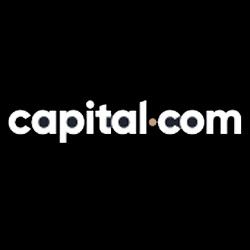
The essence of personal finance management has been highlighted by the turbulent events since 2020. The pandemic recession and hyperinflation showed how millions of money can vanish into thin air.
On a lighter note, these became eye-openers to change our behavior toward money management. As financial awareness increases, there have been notable improvements in spending, saving, and spending habits.
Given all these, personal finance management is now at the forefront of the digital revolution and economic recovery.
Innovations in banking and finance continue to reach more people, especially in emerging economies. And as the capital market inflows increase, policymakers tighten consumer protection laws.
This article will navigate the world of personal finance and discuss the factors reshaping its future.
Personal Finance: Challenges and Opportunities
The US has witnessed several massive crises that exhausted billions from millions of households and businesses. The Great Recession is a classic example that took many Americans over a decade to cope with.
Sadly, the COVID-19 happened when they were already poised to recover. It disrupted plans and financial management as medical costs overwhelmed salaries and savings.
On the flip side, the recession became an opportunity for many to buy various asset classes at very favorable prices—stocks, bonds, and real estate, to name a few. Also, many households became more eager to protect their wealth and health with insurance and annuities. These moves will help many recover this year and fight another economic slowdown.
In 2022, inflation halted economic recovery, exacerbated by external disruptions like wars and oil cuts. It peaked at 9.1%, the highest rate since the 1980s. This prompted the Fed to implement a series of interest rate hikes, reaching 5% in less than a year.
Their offsetting impact became challenging for many as elevated prices and interest rates easily overwhelmed income and savings. At the end of 2023, the total household debt hit $17T, which is mainly composed of credit card and mortgage loans.
Today, the vast majority of US workers are still living paycheck-to-paycheck. About 1 in 5 Americans spend more money than they earn every month. Even so, we can see sprinkles of hope as inflation decelerates.
Additionally, the Fed’s plan to cut rates thrice conveys a more stable economy. With that, Americans can purchase, save, repay borrowings, and invest more.
In fact, the percentage of Americans with a financial plan or budget is already at 40% versus 25% in 2018. Although our actions and solutions remain hampered by the still-recovering economy, we learned its importance. In FY25, we anticipate sustained economic recovery, enabling more people to engage in personal finance management.
Personal Finance Trends
These are the personal finance trends to expect in the following years.
More people will go cashless
Cashless payment methods have already emerged many years ago. However, it was during the pandemic that their usage rate increased. And as digital wallets became more popular, more people went cashless.
In 2015, the percentage of people using cashless methods was only 24%. It rose slightly to 29% in 2018 as more people became banked. But in 2022, it made a great leap to 41% as more businesses embraced cashless transactions.
More interestingly, there is a positive correlation between income levels and cashless method usage.
For instance, 24% of those earning less than $30,000 use cashless payments. Meanwhile, the percentages of those earning $30,000 to $49,999 and $50,000 to $99,999 who do not use cash are 35% and 45%, respectively. Lastly, 59% of those earning $100,000 and above only use cashless payments in their transactions.
This trend will persist as more online stores enter the business sector. Also, banks are working with digital wallets to increase the number of banked people.
More people will get side hustles
Earning more rather than spending less has become the mantra of many workers to fight inflation and set their financial goals. This allows them to make ends meet while pursuing their passion.
People either set up their own startups or offer services like those offered by Upwork and Fiverr. Amid the digital revolution, freelancing is now a popular trend. It allows employees to earn more during their free time. In the same way, small businesses earn more since this can be cheaper than hiring regular employees and renting office spaces.
As such, people are taking this opportunity to increase their savings without compromising their budget.
More banked individuals
The rise of digital banking enabled a more convenient and efficient bank account opening or registration. It allowed banks to reach more people, even those in remote areas. The rise of e-commerce and startups further supports this.
As of March 2024, 1.3M business registrations are already recorded for this fiscal year. This is much higher than the numbers recorded during pre-pandemic years. In addition, 99% of all businesses in the US are small businesses.
With easier business applications and establishments, more people can open their own stores without setting up brick-and-mortar stores. Online payments domestically and internationally also drive this trend as transactions become smoother with digital banking and e-wallets.
Given all these, we can expect more people to open bank accounts. With the still-elevated interest rates, a higher APY is another customer driving force.
That is why many people opt to open a checking account online instantly. This bank account type is more accessible and suitable for individual and business transactions. With a high ATM network capacity, transactions can be done almost anytime and anywhere.
Investments as part of daily lives
The financial market is starting to heat up as the economy stabilizes. We can see this trend across various financial markets, particularly the stock market.
As price returns become enticing, more individuals become more engaged and optimistic. The good thing is that the stock market has stood the test of time and returned much stronger after every crisis. For instance, the S&P 500 is now 270% times its value before the Great Recession.
Likewise, the cryptocurrency market is taking the spotlight as it expands and penetrates the mainstream market. Many banks and digital wallets are now open for crypto transactions, allowing more individuals to join.
Moreover, many businesses are accepting crypto payments for their products and services. But of course, these are still limited to large and stable cryptocurrencies, such as Bitcoin (BTC), Ethereum (ETH), and other similar coins.
In Singapore, for example, government institutions are accepting ETH payments for their services. It’s no wonder that there are over 400M cryptocurrency owners globally today.
Increased popularity of budgeting and credit monitoring apps
As we get busy making ends meet, getting multiple income streams, and building wealth, we also see the importance of budgeting and protecting wealth. This is more evident today, given the $17T household debt accumulated since the pandemic.
Aside from that, more young entrepreneurs are entering the picture, so cash flow management is crucial for saving and putting up businesses.
Microsoft Excel has always been a friend to many. It shows the complete picture of your monthly budget and is easy to navigate. However, as more advanced and personalized apps emerge, many people use them to achieve their financial goals.
Takeaway
Personal finance management has always been crucial in surviving various economic crises. It is more vital in achieving our financial goals and freedom. With the continued innovation and economic recovery, more challenges must still be addressed. However, many potential avenues for multiplying and protecting wealth are present today.

 Hot Features
Hot Features










